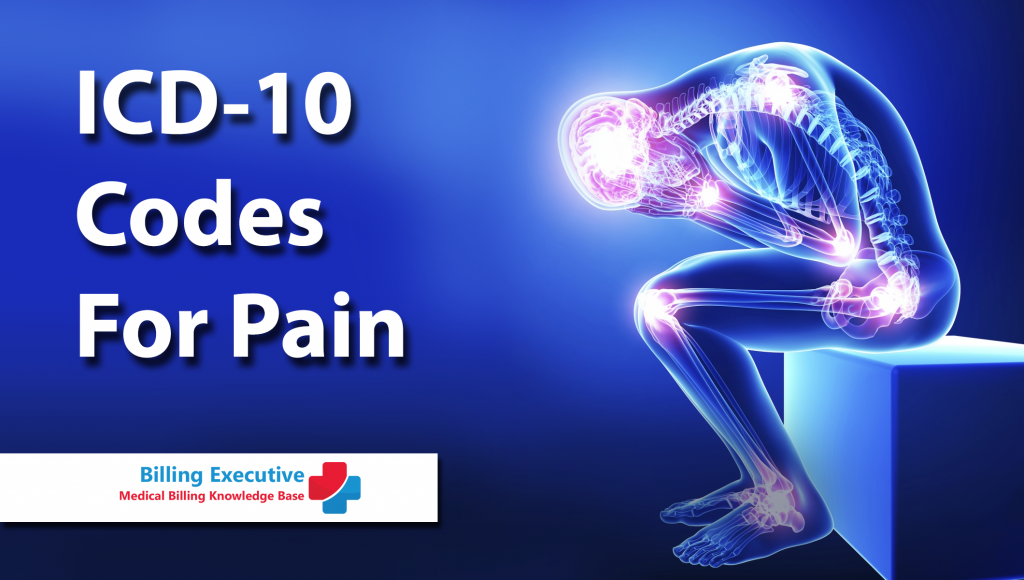Pain is a common symptom that doctors treat in all specialties. Assessing patients is problematic because it relies on self-report initiatives that do not capture the complexities of the pain experience. Correct code assignment on claims is also a challenging issue, as the ICD-10 guidelines on how to disclose different types of pain and the code sequence alignment process are extensive. Working with a pain management medical billing company can ensure accurate coding and effective claims management, resulting in increased reimbursement.

Different Kinds Of Pain
- Pain can be caused by an apparent cause, such as an injury or illness, or it can occur on its own. It’s crucial to understand the terms for different types of pain to assign the correct code.
- Acute vs. chronic pain: Providers can categorize pain as acute or chronic.
- Acute pain can last anywhere from a few minutes to three months. Chronic pain is defined as pain that lasts for a long time and is either constant or reoccurring. Chronic pain is frequently caused by a medical condition such as joint pain, fibromyalgia, or a spine problem.
- Traumatic pain is pain caused by traumatic injuries such as a car accident or a broken bone.
- Postoperative pain occurs after a procedure and can affect the joints and muscles, as well as the head and limbs.
- Site-specific ICD-10 demands are acquiring anatomic site-specific pain (pain in a specific anatomic region such as the arm, shoulder, and so on).
- Ankylosing spondylitis (AS) pain and abdominal pain are two pain associated with a definitive diagnosis. Signs and symptoms related to a confirmed diagnosis should not be noted unless they are critical to the diagnosis.
ICD-10 Codes For Pain
ICD-10 has over 162 codes for reporting pain.
The following ICD-10 pain codes are commonly used:
G89.0 was used for Chronic Central Pain Syndrome, G89.11G89.18 G89.1 used for Acute pain, G89.21G89.29 G89.2 used for Chronic pain, G89.3 Acute Neoplasm Pain, (G89.4) used for Chronic pain syndrome
Key Points To Consider For Pain Codes
Trauma Pain
G89 has codes for acute (G89.11) and chronic (G89.21) traumatic pain. The doctor must also describe whether the pain is acute or persistent in applying these codes.
Sequencing Pain Codes
ICD-10 pain codes are given and ordered depending on the encounter records and the basis for the admission. When pain is the primary symptom, G89 codes can be sequenced directly.
When the purpose of the visit is especially for pain management, the code(s) from the G89 category indicating the patient’s pain should be allocated and listed first. In this case, the practitioner is treating the pain rather than the underlying problem causing it.
Site-specific Pain Codes
Determine the position and cause of the pain. G89 codes can be reported in combination with regulations that specify the site of pain to offer further information about the type of pain.
Neoplasm Related Pain
Pain can be caused by cancer development, such as a tumour squeezing by therapies and diagnostic tests, changes in the skin, nerves, and other tissues produced by a hormone imbalance or immunological reaction. If the purpose of the visit is to manage neoplasm-related pain, G89 should be recorded as the primary diagnosis, with the particular neoplasm code as the secondary diagnosis.
Postoperative Pain
G89 includes four codes for acute and chronic post-thoracotomy pain (G89.12, G89.22) and additional post-procedural pain (G89.18, G89.28). If the pain is acute or chronic, use the code from category G89 as a secondary diagnosis.
Conclusion
The implementation of ICD-10 is currently less than two years away. We can assist you in locating the best ICD-10 option for your firm. It is the clinician’s responsibility to correctly record the patient’s health condition status and the services provided to treat that condition. That is critical for a pain management billing company’s staff to assign the proper codes under the guidelines. While there are ICD-10 codes for pain caused by trauma, post-thoracotomy pain, and various post-procedural pain, there is no timeline for when the pain becomes chronic. The documentation provided by the supplier should be used to assist with code assignment.
About us
Billing Executive – a Medical Billing and Coding Knowledge Base for Physicians, Office staff, Medical Billers and Coders, including resources pertaining to HCPCS Codes, CPT Codes, ICD-10 billing codes, Modifiers, POS Codes, Revenue Codes, Billing Errors, Denials and Rejections.
We have more than 10 years experience in US Medical Billing and hand-on experience in Web Management, SEO, Content Marketing & Business Development with Research as a special forte.
Learn More
CPT Code Of Pain Management 2022
How to Bill and Code Complex Chiropractic Conditions?
Pain Management: What Does Medicare Cover?
The Ultimate Guide to Pain Management Billing Services and EHR
